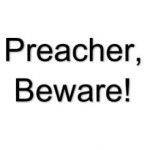Mt 19:24; Mk 10:25; Lk 18:25 – ‘A camel…through the eye of a needle’

Mark 10:25 “It is easier for a camel to go through the eye of a needle than for a rich person to enter the kingdom of God.”
See also Mt 19:24; Lk 18:25.
It is occasionally claimed either that:
(a) kamelos (camel) should be read as kamilos (rope): the two words sounded the same in the days of koine Greek (Cole). According to Garland, the words of ‘rope’ and ‘camel’ are also similar in Aramaic.
Calvin favoured this translation:
‘The word camel denotes, I think, a rope used by sailors, rather than the animal so named.’
But this interpretation has little to commend it, even though it does not materially affect the meaning of the saying.
Or,
(b) the eye of the needle was the name of a narrow gate in the city wall. A camel could pass through it only if it first shed its load. In this case, a neat ‘spiritual lesson’ would be available: we can enter the kingdom of God if we shed our burdens and get down on our knees.
According one writer:
‘Tradition tells us that the ‘eye of the needle’ was a small, narrow gate into the city of Jerusalem. In order for camels to make it through that gate, they would have to lower themselves to get through. They would also have to be rid of any excess baggage that would get in their way…If we want to enter eternal life,
– We need to lower ourselves on our knees in prayer and humility.
– We need to get rid of whatever baggage is hindering our spiritual growth.
– And we need to follow the Master through the gate to the other side with lots of faith and trust.
But:
‘There is no historical evidence to suggest that “eye of the needle” refers to a narrow gateway for pedestrians. It is an example of hyperbole, familiar in rabbinic teachings, and signifying something both very unusual and very difficult. The Talmud speaks of an elephant passing through the eye of a needle to evoke an impossible situation, and a camel is portrayed as dancing in a very small measure.’ (DBI. [I confess that I don’t understand what ‘dancing in a very small measure means’!])
Conclusion
In this saying, our Lord draws a deliberately grotesque contrast between the largest animal to be found in Palestine (the camel) and a proverbially small opening (the eye of a needle).
According to Mounce, similar sayings are found in the Koran and also in the Talmud (with ‘elephant’ rather than ‘camel’).
The saying is in line with our Lord’s frequent use of hyperbole:
‘The comment’s sheer absurdity is in alignment with Jesus’ parabolic speech (Mark 3:23; 4:1–34), as suggested by the Twelve’s flabbergasted query: “Then who can be saved?” (v. 26).’ (Feasting on the Word, Year B. Vol 4.)
According to the IVPNTC:
‘The hyperbole here makes it clear that a rich man on his own will never make a choice for the kingdom. It is impossible. The priorities it requires demand a new heart.’